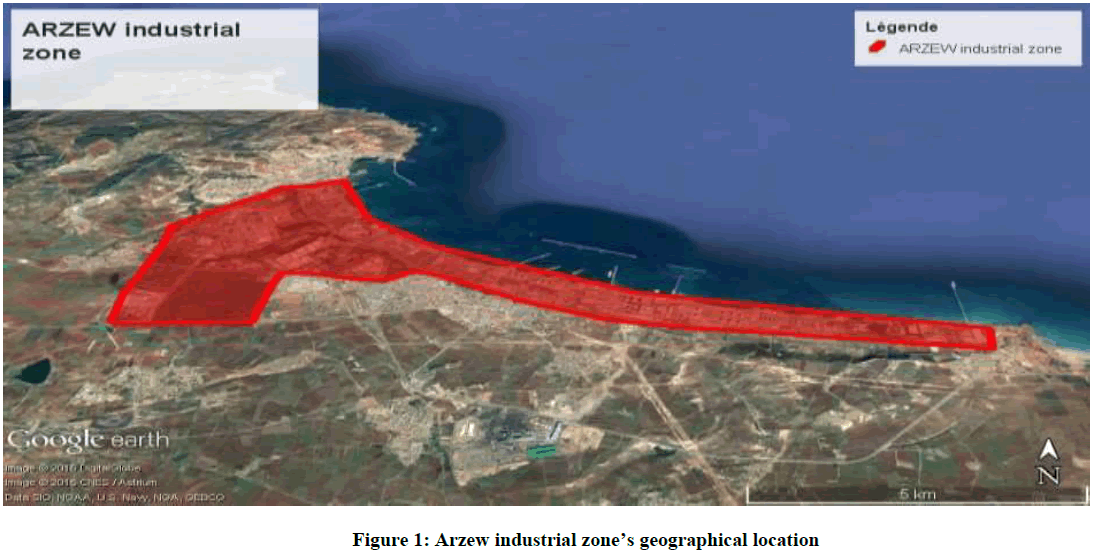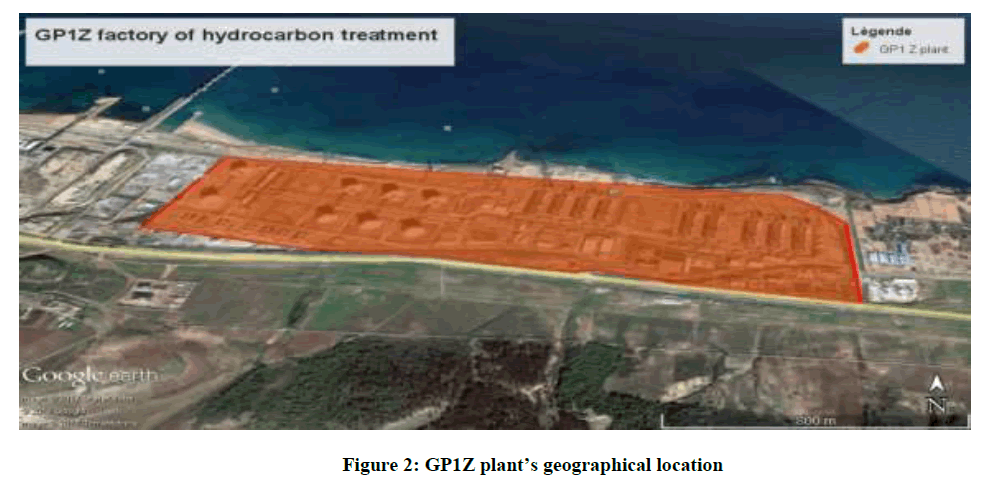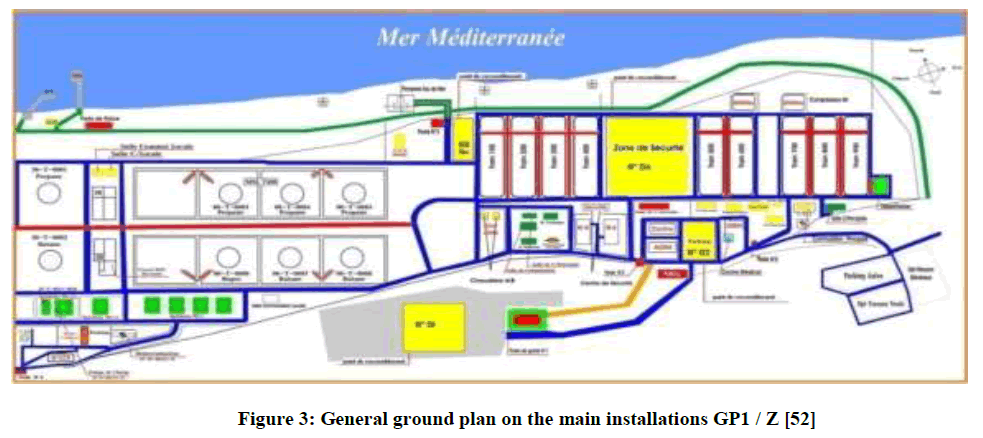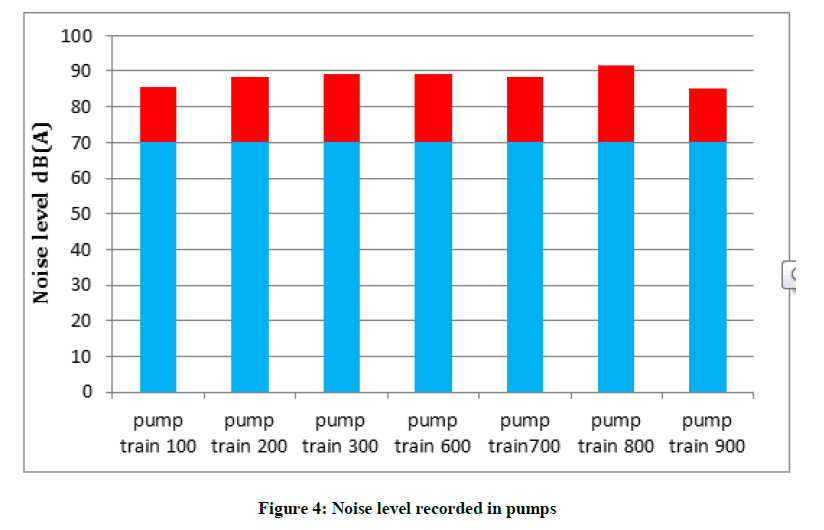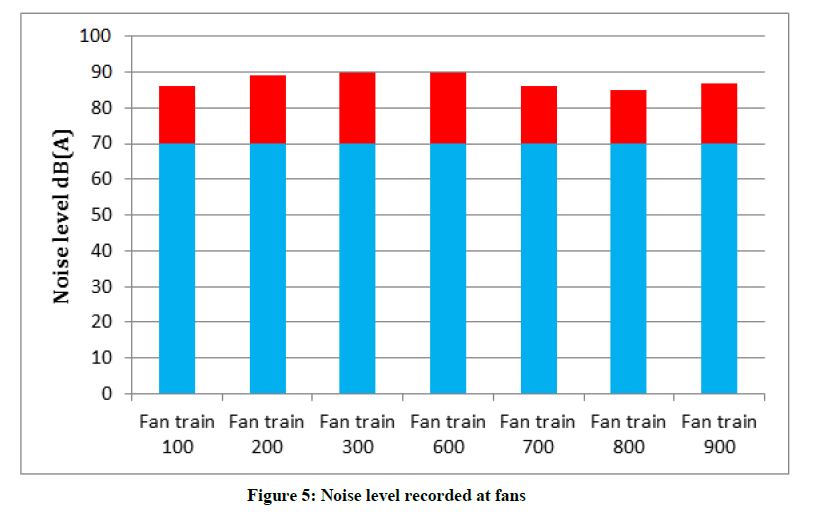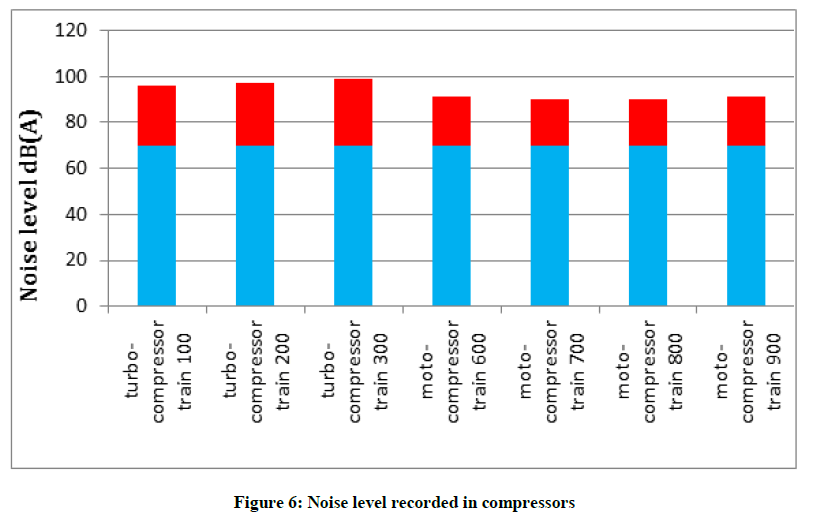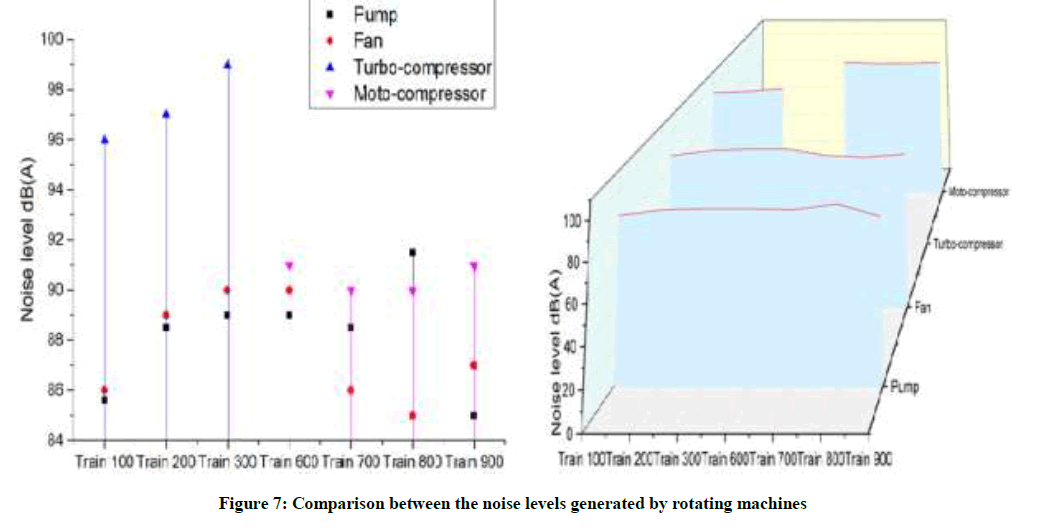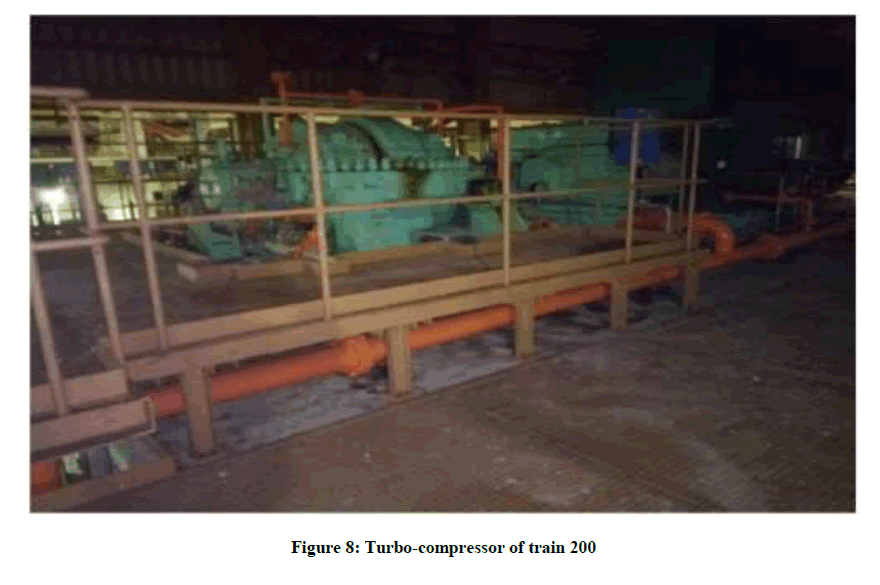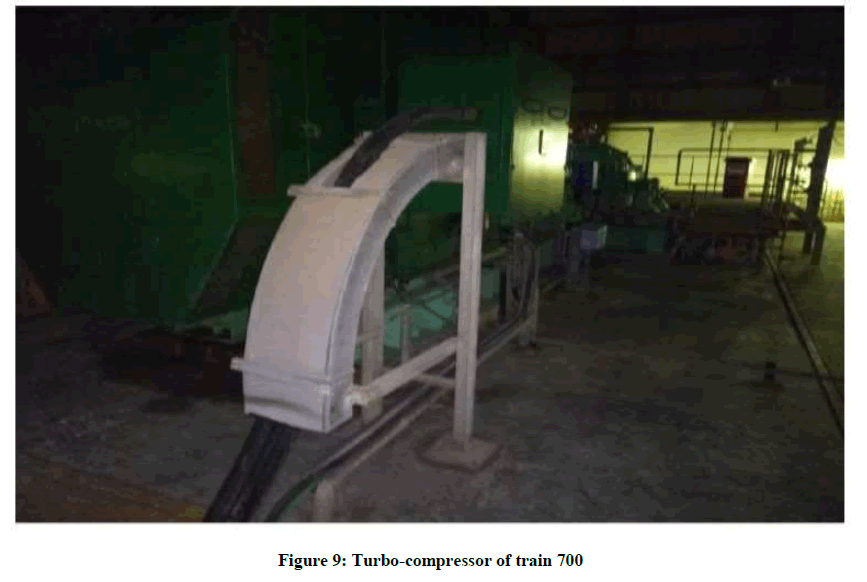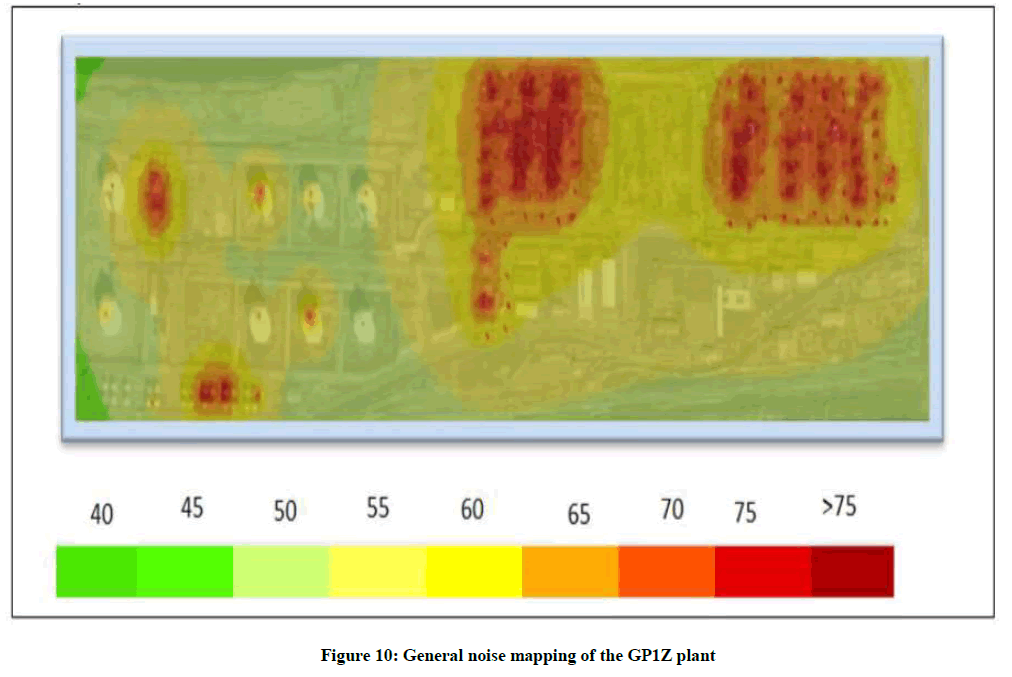Research Article - Der Pharma Chemica ( 2018) Volume 10, Issue 5
Comparative Study of the Noise Generated by Rotating Machines in Industrial Area of Arzew (Algeria): A Case Study in GP1/Z Plant
Iliace Arbaoui1*, Ahmed Hamou1, Sarra Hennane1, Nasreddine Sayad2, Iliyes Kelkoul3, Ali Abderrazak Tadjeddine3, Abdelhakem Belaghit4, Yacine Boujemaa5 and Assia Arbaoui6
1The Environment and Materials studies’ laboratory of Physics Department, Exact and Applied Sciences Faculty of Oran’s University 1 Ahmed Ben Bella, Algeria
2Faculty of Mathematics and Computer Science, University of Science and Technology mohamed boudiaf, Algeria
3Laboratoire SCAMRE, ENPO D’Oran- Maurice AUDIN
4Laboratoire de Biomécanique Appliquée et Biomatériaux, ENPO D’Oran- Maurice AUDIN
5Faculty of chemistry university of Science and Technology mohamed boudiaf, Algeria
6Department of Hydraulics, University of Bechar, Algeria
- *Corresponding Author:
- Iliace Arbaoui
The Environment and Materials studies’ laboratory of Physics Department
Exact and Applied Sciences Faculty of Oran’s University 1 Ahmed Ben Bella, Algeria
Abstract
The fundamental aim of this study is to compare between the noise generated by rotating machines in GP1/Z plant in the industrial zone of Arzew (Algeria). At present, noise is an integral part of our environment; it represents a serious challenge because of its dangerous health effect. Although, in Algeria many studies have been carried out concerning noise pollution due to transport (road, air and rail traffic) but, only few have dealt with the case of industrial noise. The study of noise generated by rotating machines in industrial units is a complex problem that requires in-depth research to determine noise sources, on-site measurements, noise mapping and solutions to this problem. This is the main objective of this work. In order to study and evaluate the impact of the noise generated by rotating machines in the GP1Z plant, we used an engineering method, called simplified method. Simulation was done based on Code-TYMPAN software. The results of our study show that the average noise level generated by rotating machines at the GP1/Z complex is unacceptable compared to the standard. We have also shown that noise measurements exceeding danger ratings have been identified approximately noisy installations (rotating machines). We also pointed out that the situation will exacerbate if there wouldn't provisions in the near future.
Keywords
Noise, Rotating machines, Noise mapping, GP1/Z plant
Introduction
The Algerian industry is an essential segment of the economic development of the country [1]. However, it affects our environment with a significant amount of pollution such as (the atmospheric pollution [2-5], solid [6-8], marine [9], etc.). Among these types of pollution, noise pollution generated by rotating machines in the industrial area is poorly studied in Algerian scientific researches. Noise is unwanted sound from activity in certain rate and time, which can cause human health problems and disturbs environmental comfort [10,11]. In the same context, machine condition monitoring plays an important role in production sustainability in an industry using rotating machineries such as pump, Turbo-compressor, moto-compressor, fans, etc. [12]. For this reason that it is in our study we will evaluate the noise levels emitted by rotating machines. Turbo-compressors (TC) are well known machines with a development of near a hundred years, Centrifugal compressors of industrial systems use mechanical energy to compress the working fluid [13] but they generate a lot of noise during their operation. Nowadays, there is a great concern about noise in city-based and industrial areas [14-27]. In the United States, more than 20 million (in Egypt over 2 million) industrial workers were subjected to occupational noise with a level above 85 dB (A), resulting a progressive sensory and neurosensory hearing loss [28]. Noise pollution is considered one of the first environmental nuisances reported by the population [29-36]. Occupational noise that is the major nuisance is even more important. It can cause deafness but also stress and fatigue, which have an impact on the health of the employee and the quality of his work, and this is due mainly to machines. Beside, Exposure to environmental noise is associated with irritation, sleep disturbances and cognitive ability in schoolchildren [37]. Noise also can be the main cause of damage of the cardiovascular system in exposed workers [38].
In addition to previously announced objectives, this study examined also the environmental impact of noise generated by large rotating machines, based on situ measurements of sound pressure levels and noise mapping.
In our work, we will identify the noise sources of rotating machinery, carry out measurements, assess the risks, recall the regulations and standards and propose solutions for noise reduction. Several simulator have been adopted for making noise maps [39-44] such as ; Sound City, CadnaA, OUIE2000, DBlink (Industry) and IMMI dB Vib instrumentation [45], in our study we chose the CODE-TYMPAN, which is adapted to industrial noise as a tool for interpreting our results. It allows the realization of engineering studies in environmental acoustics of research work in the field of acoustics.
Standards and regulations
Occupational health and the protection of the sound in the environment are important issues regardless of the location of the industrial establishment in the world. The international regulatory and normative framework tends to strengthen and to harmonize more particularly in Europe. The protection of the environment, the location of an establishment and its integration into the environment become strategic elements in projects [46].
To better understand the level of noise in our plant (GP1/Z), we found it useful to identify noise from the regulatory point of view in order to have an overview of the legislation that deals with noise directly or indirectly.
At the Algerian level
Beginning in the 1990s, Decree No. 01/01 of 19/01/1991 and Decree No. 93-120 of 15/05/1993 governing health, safety protection and prerogatives role of the occupational physician. Executive Decree No. 93-184 dated on July 27th, 1993 regulates the emission of noise. The installations subject to the legislation of the Establishments classified for the Protection of the Environment are subject to the provisions of the executive decree n ° 93-184 dated on July 27th, 1993 regulating the emission of the noises. With reference to this text, the values set in the residential areas may not exceed 70 dB (A) during the day period and 45 dB (A) in the night period, unless the residual noise exceeds these values.
At European level [47]
The new Directive 2003/10 / EC will repeal Directive 86/188 / EEC as from 15th February, 2006, the deadline for the transposition of the new Directive. The new noise directive is characterized by the desire to establish a clear, coherent prevention strategy that is capable of protecting the safety and health of workers exposed to noise.
At American level
The Occupational Safety and Health Administration (OSHA) regulations set the permissible doses of noise based on exposure time [48-51]. For example, the regulation stipulates that industrial employers must limit noise exposure their employees to 90 dB (A) for a period of 8 hours [28].
Materials and Methods
The instrument used is the sound level meter (Roline RO-1350) with a calibration of 94 dB. As part of our study on noise nuisance due to industrial noise, a strategic location was selected, which is the GP1 / Z plant of the Arzew industrial zone because it became the first plant at the African level with a total area around 120 hectares [52]. It contains all the conditions for carrying out this study such as; Measuring instruments, machines, etc. In addition, our study aimed to address these concerns by measuring the noise levels emitted by all noisy machines in order to produce accurate statistics, a noise mapping, and to be able to perform interpretations for the purpose of improving working conditions and preserving the health of employees, residents and the environment in general (Figures 1-3).
Figure 3: General ground plan on the main installations GP1 / Z [52]
In order to provide answers to the problem presented on the comparative study with the noise generated by rotating machines in industrial area of Arzew, we adopted the following methodology:
• Identification of noise sources
• Carrying out the necessary measures
• Simulation of results
• Interpretation of results
• Realization of noise maps
Results and Discussions
Identification of noise sources
Prior to the identification of noise sources, a general survey of all the areas of the GP1 / Z plant is necessary with the verification of the results of noise measurements of the past years and the detection of the noisiest zones in collaboration with the HSE engineers who are responsible Monitoring of noise emission levels by machines. In a second step we made noise measurements, the choice of observation and measurement intervals was chosen in accordance with NFS 31.010 and ISO 3744. The measuring intervals are approximately 30 min (except in the case of very stable noise).
After carrying out these steps we noticed that there are four noisiest rotating machines: compressors, pumps, fans and turbines. The Table 1 bellows represent the noise level recorded in these machines.
| Noisiest Machines | Pump | Turbo-Compressor | Moto-Compressor | Fan |
|---|---|---|---|---|
| Train 100 | 85, 6 | 96 | - | 86 |
| Train 200 | 88, 5 | 97 | - | 89 |
| Train 300 | 89 | 99 | - | 90 |
| Train 600 | 89 | - | 91 | 90 |
| Train 700 | 88, 5 | - | 90 | 86 |
| Train 800 | 91, 5 | - | 90 | 85 |
| Train 900 | 85 | - | 91 | 87 |
Table 1: Noise level generated by rotating machines
To reinforce the results, we have represented in the form of histograms the measured noise levels in the following figures:
The Figure 4 shows the different noise level recorded at the pumps of sequences. The noise sources of the pumps are divided into two main groups: hydraulic and mechanical. It’s transmitted by a fluid and by structure.
The fluid-transmitted noise is derived from the flow pulsation which is then propagated by driving systems to other parts of the fluid supply systems. The flow pulsation is created due to the finite rigidity of the oil and the limited number of pumping elements. The noise generated by the structure comes directly from the pulsations in the machine. The pulsation forces are mainly created by the pressure differences between the high and low pressure ports. In the other hand, the noise of pumps is generated also by the mechanical movement of the pump components and by the movement of the pump and system liquid. Other factors essential in the process of noise generation at the pumps are cavitation problem, fluctuations in fluid pressure, the impact of solid surfaces and the dynamic imbalance of the rotor, mechanical problem in the pump, such as rotor imbalance, wheel or seal friction, defective or worn bearings, vibrating pipe walls and unbalanced rotors, incorrect installation of couplings in centrifugal pumps often causes noise at twice the pumping speed (misalignment).
From the results we have obtained in the Figure 5, its noticed that the average of noise level recorded at fans of trains is almost similar to those recorded at the pumps, but they are higher than the threshold allow by the Algerian regulations 70 dB (A). The noise of a fan comes first and foremost from unsteady aerodynamic phenomena associated with the interaction of the rotor-stator generated by the fluctuations of the pressure and also the interaction of blades and fixed parts with flow and inseparable wall pressure fluctuations that correspond to tonal acoustic sources. The design of the blade and the conditions of the fluid flow is the important parameters that directly affect the noise emission of the fan. According to the results we’ve obtained and we have represented in Figure 6, we can observe that the noise levels generated by the turbo-compressor and that generated by the moto-compressor are so high. In a gas compressor the noises are mainly generated because of the following reasons:
• The compression process and the events associated with it are the extreme source of the noise.
• When a rotor blade passes through a stator blade in a compressor, the gas receives a pulse; therefore a noise is generated from this impulsive action.
• The electric motor that rotates the compressor, it rotates with unstable speed during crank rotation and there are varying forces of the stator acting on the compressor structure. And therefore a noise is generated.
• The unbalanced rotors and the rubbing of the shaft.
• The noise of the mechanical origins coming from the vibrations due to the magnetic forces, and it stops consequently when the machine is switched off; this type of noise depends on the shaft’s charge, the voltage, the current, the frequency, the enrolment’s parameters, and the groove’s geometry, etc.
A comparison between the noise level generated by the turbo-compressors, moto-compressors, fans, and pumps
The Figure 7 below represents a comparison between the noises level generated by the rotating machines which are exists in the GP1Z plant.
These results demonstrate that the turbo-compressor is the noisy machine compared to the moto-compressor, fan and pump. The origin of this high noise level recorded in the turbo- compressor is fundamentally due to the gas turbine which is feed by fuel gas, which enters the room of combustion to produce vigorous gas of exhaust, this energy of the fluid transforms into a rotating mechanical energy on a shaft allowing a compressor to be driven. The compressor is linked to the turbine through a common shaft; the principal role of the compressor is to compress the gas. Several origins of noise can be distinguished in the turbo compressor system:
It’s evident that a small fraction of mechanic energy is converted to an acoustic energy, it can propagate into the whole system and be manifested as noise, and the vibration of the body can also contribute to the generation of noise.
• The vibration of the compressor’s components or surfaces because of the variations of the pressure generated in the fluid.
• The major part of the turbo-compressor (Figures 8 and 9) are old components, thus, the machine age represents an important factor in the noise pollution generation.
• Certain turbine generated noise need to be maintained.
The impact of the noise generated by rotating machines in the GP1Z plant
Since the introduction of the EU ambient noise directive, strategic noise mapping has been used as a tool for noise policy in many European countries [46]. For this reason we have carried out the noise mapping, in order to prove to huge impact of the rotating machines on noise pollution; we have made a noise mapping of GP1/Z plant. As an indication, we chose the COD-TYMPAN simulator as a tool. To perform our simulation, we chose to first simulate each zone of the plant alone and then generalize the simulation to the whole plant.
The Figure 10 represented the noise mapping of GP1/Z plant, these results we have noticed the great effects of rotating machines on the generation of noise pollution. We note that the most important noise levels are in the center of the trains (100, 200, 300, 600, 700, 800 and 900). Indeed, this is where the rotating machines (turbo-compressors, moto-compressor, pumps, fans, etc.) are located.
They also showed that the noise level is high in all machines including trains. However, there are some differences between these machines. The noise levels recorded in rotating machines is higher. This is mainly because the large volume rotating machines are noisier than those of small volumes. Indeed, those, which are supplied by a large flow of fluid, are noisier than those supplied by a low flow rate of the fluid. On the other hand, the age of machines also play a major role in the emission of noise.
After comparing the results between the trains we found that the compressors of trains 100, 200 and 300 (turbo-compressor) are more noisy compared to the compressors of trains 600, 700, 800 and 900 (moto-compressors). The noise levels observed in Trains 700, 800 and 900 are lower than trains 100, 200, 300 and 600 because of their age. Indeed, trains 700, 800 and 900 were recently acquired by the complex in 2010 (less than five years ago).
From the results of the noise mapping, we conclude that the noise generated by the rotating machines have a great impact on the environmental noise generation inside and outside the plant, we could also observe that the propagation of the noise’s surface is increasing if we take the noise in consideration, then we can talk about its impact on health of the workers inside the plant for 8 hours of work and on the health of the neighboring inhabitants who are exposed to a higher level of noise.
Conclusion
Through the various results we have obtained we can conclude that the noisiest rotating machines are: the pumps, fans, turbo-compressor and moto-compressor. They are characterized by a high noise level compared to other machines in GP1/Z plant. The average noise level was unacceptable compared to the standard and regulations. The turbo-compressors is noisier than the moto-compressor and also than other rotating machines. The reduction of the noise level in the nosiest area was conditioned by the wearing of the individual hearing protectors, the duration of exposure and the actions of soundproofing approximately the noisy sources and reduction of the propagation outdoors. Noise reduction will improve the quality of work, life, preserve hearing, reduce stress and the diseases involved which may reduce the risk of accidents. For all this reason, we recommend to change the turbo-compressor by moto-compressors to reduce the noise level and the percentages of gases (CO2, NOx, etc.) escaping from the torches. We also recommend preventive maintenance while respecting the maintenance range of equipment. Finally, we’ve made noise mapping of the GP1/Z plant to determine the noisiest areas from those which are less noisy and to inform and sensitize all the staff of the GP1/Z plant.
Acknowledgement
The author is thankful to the director of the environment and materials studies’ laboratory of Oran’s university 1 Ahmed Ben Bella and SONATRACH authorities for support and facilities provided by them to achieve and complete this study.
References
- I. Arbaoui, A. Hamou, H. Abderrahim, A. Tayeb, M.R. Chellali, J. Mater. Environ. Sci., 2018, 9(1), 1-10.
- H. Abderrahim, A. Hamou, J. Mater. Environ. Sci., 2014, 5(3), 865-872.
- A. Tayeb, A. Hamou, S. Debbah, JSM. Environ. Sci. Ecolo., 2015, 3(1), 1015.
- A. Tayeb, A. Hamou, S. Debbah, JSM. Environ. Sci. Ecolo., 2015, 3(2), 1021.
- H. Abderrahim, R. Chellali, A. Hamou, Environ. Sci. Pollut. Res., 2015, 23(2), 1634-1641.
- B. Bouhadiba, A. Hamou, M. Hadjel, Y.G. Kehila, Matejka, J. Environ. Healt. Sci. Engine., 2014, 12.
- N. Ramdani, Y. Al-Douri, A. Hamou, J. Mater. Environ. Sci., 2015, 6(5), 1310-1320.
- N. Ramdani, A. Hamou, A. Lousdad, Y. Al-Douri, Environ. Techno., 2015, 36(12), 1594-1604.
- A. Tayeb, M.R. Chellali, A. Hamou, S. Debbah, Marin. Pollu. Bull., 2015, 98(1-2), 281-288.
- The Ministry of Environment of the Republic of Indonesia. The Decree of the Minister of Environment Number Kep-48/MENLH/11/1996 on the Standard noise level (in Indonesia), 1996.
- I. Nur, B.B. Nandyan, W. Tri, The development of compressor noise barrier in the assembly area (Case study of PT Jawa Furni Lestari), 13th Global Conference on Sustainable Manufacturing - Decoupling Growth from Resource Use, Procedia CIRP 40, 2016, 705-710.
- T. Bagus Atmaja, A. Dhany, Machinery Fault Identification Using Blind Sound Separation and Fuzzy System, January 2011, 1.
- I. Silviu, S. Valentin, E. Nicolae, M. Ioan, I. Ionescu, U.P.B. Sci. Bull., Series D, 2011, 73(3), 32-40.
- T.J. Schultz, J. Acoust. Soc. Am., 1978, 64(2), 377-405.
- A.A. Saadu, R.O. Onyeonwu, E.O. Ayorinde, F.O. Ogisi, Appl. Acoust., 1996, 49(1), 49-69.
- G. Belojecic, B. Jakovljecic, O. Aleksic, Environ. Int., 1997, 23, 221-226.
- W.H.K. Lam, M.L. Tam, Transp. Res. D., 1998, 3(4), 239-248.
- M. Arana, A. Garcia, Appl. Acoust., 1998, 53(4), 245-253.
- C. Maschke, Acustica., 1999, 85, 444-448.
- P.H.T. Zannin, F.B. Diniz, A. Calixto, W. Barbosa, Acustica., 2001, 87, 625-628.
- P.H.T. Zannin, F.B. Diniz, A. Calixto, W. Barbosa, Appl. Acoust., 2002, 63, 351-358.
- J.M.B. Morillas, R.V.G. Gómez, V.G. Escobar, J.A.M Sierra, C.T. Vidal, L.A. Bueno, Rev. Acust., 2002, 33, 27-31.
- P.H.T. Zannin, B. Szeremetta, Cad. Saude. Publica., 2003, 19(2), 683-686.
- E.C. Paz, A.M.C. Ferreira, P.H.T. Zannin, Rev. Saude. Publica. (J. Public. Health.), 2005, 39(3), 467-472.
- P.H.T. Zannin, D.Q. Sant´Ana, Appl. Acoust., 2011, 72(8), 479-86.
- I.C.M. Guedes, S.R Bertoli, P.H.T. Zannin, Sci. Total. Environ., 2011, 412, 66-76.
- P.H.T. Zannin, M.S. Engel MS, P.E.K. Fiedler, F. Bunn, Cities., 2013, 31, 317-27.
- A. A. Sayed, Industrial noise levels and annoyance in Egypt, App. Acoust., 2011, 72, 221-225.
- Rapport de l’Organisation Mondiale de la Santé, page 1, 2011.
- B.J. Omoniyi, O.I. Oluwadare, IOSR-JESTFT., 2013, 2(6), 18-23.
- E. Atmaca, I. Peker, A. Altin, Poli. J. Environ. Stu., 2005, 14, 721-726.
- R. Mario, H. Son, PPUR Collection: Electricity., 2007, 153.
- Agence Française de Sécurité Sanitaire Environnementale., 2004.
- DVISOR: Michel Roger, Modélisations analytiques du bruit tonal d’interaction rotor/stator par la technique de raccordement modal, thèse doctorat, janvier, 2017.
- G.L. Nost, Contribution à l’étude de l’impact environnemental sonore des sites industriels: une typologie perceptive des sources de bruit (Contribution to the study of the environmental impact of industrial plants: a perceptive typology of industrial noise sources) (Doctoral dissertation, Ph. D. Dissertation, INSA, Lyon, France, 2007.
- J.C. Bera, C. Michew, L. Collet, Supplément au Journal de Physique., 1994, 4, 111.
- J. Gulliver, D. Morley, D. Vienneau, F. Fabbri, M. Bell, P. Goodman, S. Beevers, D. Dajnak, F.J. Kelly, D. Fecht, Environmental Modelling & Software., 2015, 74, 183-193.
- C. Assunta, S. Ilaria, D.S. Simone, T. Gianfranco, C. Teodorico, S. Carmina, S. Anastasia, G. Roberto, T. Francesco, R.M. Valeria, Int. J. Hyg. Environ. Health., 2015, 218(1), 163-168.
- DEFRA, Towards a national ambient noise strategy, A consultation paper from the air and environmental quality division, 2001.
- T.K. Ting, L.M. Der, C.Y. Hua, Appl. Acous., 2009, 70, 964-972.
- T.S. Bozkurt, S.Y. Demirkale, J. Build. Engi., 2017, 9.
- R.J. Peters, B.J. Smith, M. Hollins, Acoustics and Noise Control, 3rd (Edi.), Pearson Education Limited, 2011.
- Acoustics–Description and measurement of environmental noise, Part 1: Basic quantities and procedures, ISO, 1981.
- A.J. Shatha, Ibrahi, Noise Mapping of the Campus of the College of Engineering/The University of Al-Mustansiriyah, 5, 4, 2015.
- Center for studies on French networks, transport, urban planning and public buildings, catalog of software for calculating the noise of road and rail infrastructures, an overview of the French market, May, 2002.
- Jean-Michel MONDOT, traité Environnement., 2000.
- José Biosca de Sagastuy, Direction générale de l’emploi, des affaires sociales et égalité des chances, Commission Européen : Magazine de l’agence européenne pour la sécurité et la santé au travail, le bruit au travail, huitième (Edi.), 3, 2005.
- Occupational Safety and Health Act. Code of Federal Regs, Title 29, Chapter XVII, Part 1910, 2006.
- OSHA, Federal Register, 1983, 48(46), 9738-9785.
- F.B. Randall, Industrial, Noise Control and Acoustics, Marcel Dekker (Eds.), Louisiana Tech University, Ruston, Louisiana, USA, Inc., 2003.
- OSHA: Occupational Safety & Health Administration (OSHA) Noise Regulations, Construction. Safety Association of Ontario and the American Society of Safety Engineers (ASSE) standard, ANSI/ASSE A10.46-2007-Hearing Loss Prevention in Construction and Demolition, 2013.
- Rapport de stage du complexe GP1/Z fournit par secrétariat de département de sécurité industriel et environnement, 2015.

